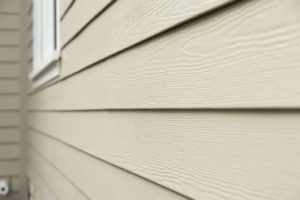In a word, no, fiber cement siding does not rot the same way that other types of siding do.
Common Reasons for Siding Rot
One of the most common reasons why homeowners replace their siding is because of rot. Wood siding is especially prone to rot due to issues like:
One of the most common reasons why homeowners replace their siding is because of rot. Wood siding is especially prone to rot due to issues like:
- Worn paint – Wood siding is almost always painted, which protects the wood surfaces and beautifies the home. Over the years, however, paint can wear away if it’s not maintained properly. This allows the wood underneath to absorb moisture, decay, and rot.
- Improper installation – If wood siding is not installed correctly, it can create gaps and spaces where water can seep in, leading to rot and decay.
- Pests – Birds and insects are naturally drawn to wood siding, and the damage that these creatures cause can leave weakened, rotting areas of siding behind.
How Fiber Cement Siding Differs
Fiber cement siding, which was invented by manufacturer James Hardie®, is made from a mix of wood pulp and cement. This siding is very water resistant, and since rot is mostly caused by moisture, fiber cement siding is resistant to rot.
Additional Benefits
In addition to being resistant to moisture and rot, James Hardie HardiePlank® fiber cement siding shows extreme durability against:
- Fire
- Termites, woodpeckers, and other pests
- Rain, sleet, hail, and snow
- Fading
Contact us Today!
If you’re interested in having fiber cement siding installed on your Texas home, contact BELDON Roofing Company today. We have been improving homes since 1946 and would be happy to provide you with a free consultation to discuss your siding needs.

